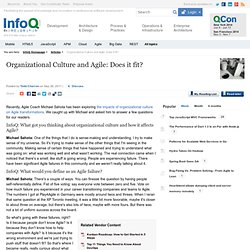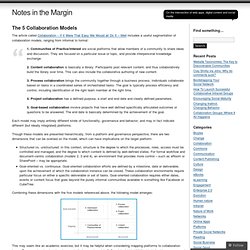

Building IT Relationship 101: Collaboration Models. Want to build a mutually beneficial relationship with your clients?

Of course you do. That is what every business strives to achieve – the ultimate goal for every market player out there. Ironically, what’s so obvious is in fact the most challenging part of any business practice. The need to build relationships refers to every industry across the board, and so do the general guidelines for actually creating the relations. Also, in many industries there are collaboration models which regulate just how a business interacts (i.e. collaborates) with its customers.
IT is a ‘booming’ industry. This model suits when short-term issues come up with a project. This model is most suitable in cases when it’s impossible to define the requirements to the product since they may change in the development process. The model assumes a dedicated team created for the project. 4. Of course, these models are the major ones, the most fundamental. Phase 2: Coordination - Golden Loom. 6121036_orig.png (1100×689) Collaboration. Anat Pessate-Schubert, Director, Ashalim Knowledge and Learning Center (JDC) “As we approach each of the great social challenges of our time we must acknowledge that old thinking will not provide the new solutions we need.

These solutions will be uncomfortable, hard to sell, and risky to execute. But the cost of not doing so is even greater.” Simon Mainwaring Let us begin our current interaction with a short quiz: Who is Alexa? A) Michelle Obama’s daughter b) Katrina’s sister c) Recent snow storm in Israel d) None of the above What do handling Alexa and collective impact (‘CI’) have in common? A) Breakthrough thinking b) No ego trip. Collaboration Models from Victors and Spoils.
One of the most exciting aspects to social media is the prospect of facilitating real collaboration between brands and their consumers.

One of the agencies at the forefront of the crowdsourcing move (some would argue too much) is Victors and Spoils so I was interested to see a couple of blog posts from one of the “big brains” at V&S outlining a couple of their processes: Levels of collaboration for brands. 1. Social Media Engagement. Organizational Culture and Agile: Does it fit? Recently, Agile Coach Michael Sahota has been exploring the impacts of organizational culture on Agile transformations.

We caught up with Michael and asked him to answer a few questions for our readers. InfoQ: What got you thinking about organizational culture and how it affects Agile? Michael Sahota: One of the things that I do is sense-making and understanding. I try to make sense of my universe. So it's trying to make sense of the other things that I'm seeing in the community. Schneider-Culture-Model.jpg (1544×1132) Collaborative business models. Identifying appropriate collaborative business models There are several collaborative business models in theory and practice.

However, specific models for successful Horizontal Collaboration have not been identified. The Collaborative business model section aims to identify… Cross-Jurisdiction Collaboration: Innovative Operating Models for Governments and Institutions. MPSNET - Collaborative Service Model. MPSNET - Collaborative Service Model. 4 Pillars of Clinical Integration: A Flexible Model for Collaboration. 4 Pillars of Clinical Integration: A Flexible Model for Collaboration By Health Directions President & CEO Daniel J.

Marino. Originally published by Becker’s Hospital Review. Government and private insurers are gradually moving away from encounter-based reimbursement and rapidly developing new payment models that reward coordination of care and population health management. How should healthcare leaders respond? The first option is to do nothing. The next option for hospitals and physicians is to work on improving care coordination, but within their respective silos. That brings us to the last option: clinical integration between hospitals and physicians. Unfortunately, the path to clinical integration is far from clear. 1. The first pillar of clinical integration is a shared governance body with strong physician leadership. Pharma and Biotech - Collaborative models - Strategy - Issue 10, 2009 - Pharma Focus Asia. Collaborations are a common business practice within the pharmaceutical and biotechnology industry.

This article discusses both the strategic and tactical drivers for engaging in collaborations as well as some of the distinguishing features of the various types of collaborations used in this industry. Bruce M Pratt Vice President Science DevelopmentGenzyme Corporation, USA Collaborations are the voluntary, joint actions of two or more parties to achieve a common goal. This is a straightforward concept in principle, but often more complex in the real world. Within the pharmaceutical and biotechnology sectors, one can easily identify at least six major classes of stakeholders, viz. private industry, academia, regulatory agencies, governments (policy and legislation), patient advocacy groups, and payers (public / private). Three tiers of collaboration - Column Two. Written by James Robertson, published November 18th, 2008 Categorised under: Collaboration, Knowledge management There are many elements of collaboration, and we often encounter the “blind men and the elephant problem”.

We’re all talking about collaboration, but we’re actually discussing different parts of the animal. Some people are referring to technology when they talk about collaboration, others are looking at the “collaborative culture” within organisations, while still others consider collaboration from an individual’s perspective. All are valid topics, but the breadth of collaboration can lead to crossed lines when we try to bring them all together.
Within an organisation, it’s easy to get caught up in just a few aspects of collaboration, leaving big holes that impact on short and long-term success. While sitting in an airport on the way back to Australia, a overall model for collaboration coalesced in my mind, bringing together all the different aspects of collaboration. Capacity. A Collaboration Maturity Model. Collaboration – If it Were That Easy We Would all Do It – Well. Models for Intercultural Collaboration and Negotiation. The 5 Collaboration Models. The article called Collaboration – If it Were That Easy We Would all Do It – Well includes a useful segmentation of collaboration models, ranging from informal to formal: 1.

Communities of Practice/Interest are social platforms that allow members of a community to share ideas and discussion. They are focused on a particular issue or topic, and provide interpersonal knowledge exchange.2.